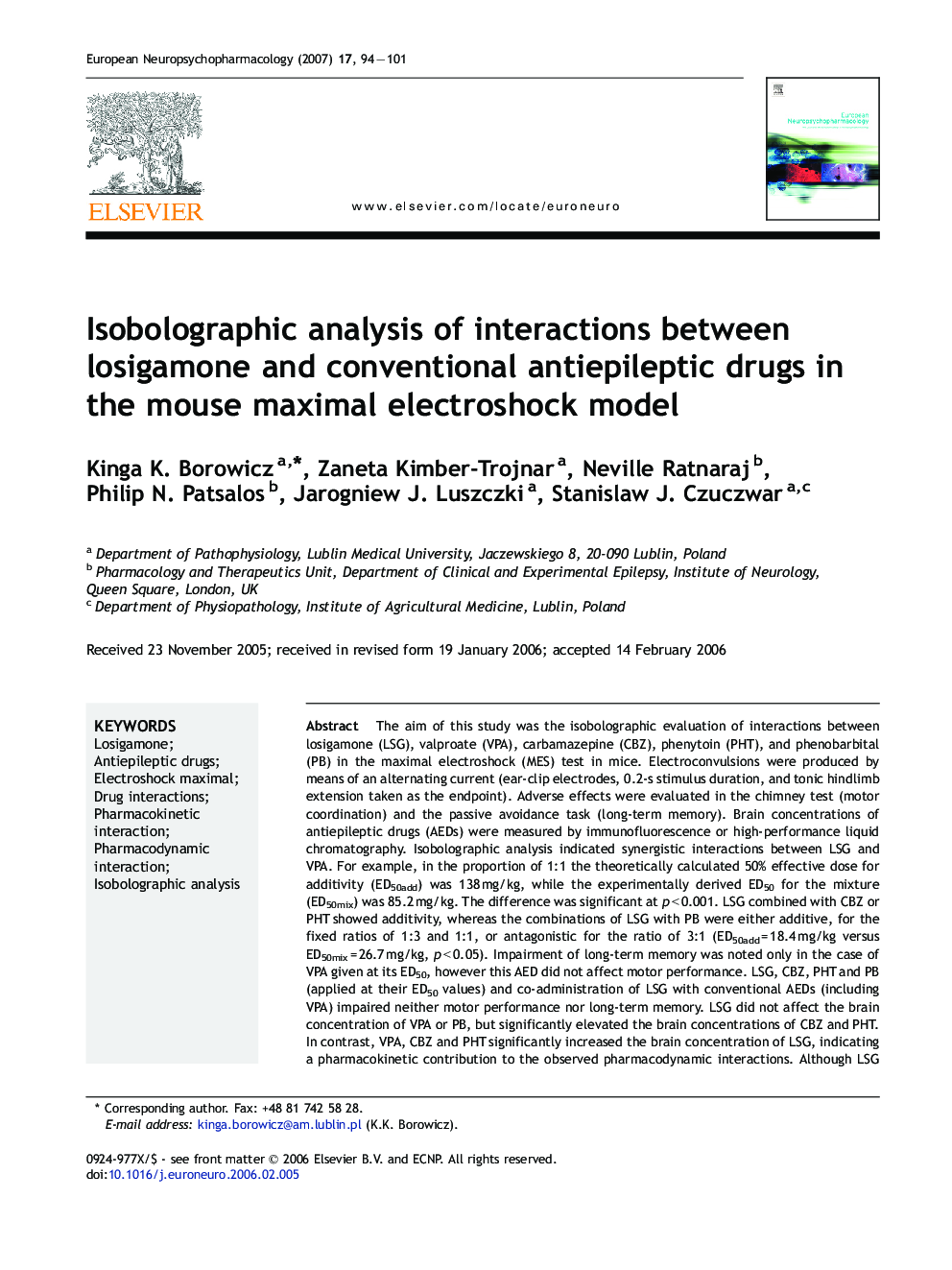| Article ID | Journal | Published Year | Pages | File Type |
|---|---|---|---|---|
| 319963 | European Neuropsychopharmacology | 2007 | 8 Pages |
The aim of this study was the isobolographic evaluation of interactions between losigamone (LSG), valproate (VPA), carbamazepine (CBZ), phenytoin (PHT), and phenobarbital (PB) in the maximal electroshock (MES) test in mice. Electroconvulsions were produced by means of an alternating current (ear-clip electrodes, 0.2-s stimulus duration, and tonic hindlimb extension taken as the endpoint). Adverse effects were evaluated in the chimney test (motor coordination) and the passive avoidance task (long-term memory). Brain concentrations of antiepileptic drugs (AEDs) were measured by immunofluorescence or high-performance liquid chromatography. Isobolographic analysis indicated synergistic interactions between LSG and VPA. For example, in the proportion of 1:1 the theoretically calculated 50% effective dose for additivity (ED50add) was 138 mg/kg, while the experimentally derived ED50 for the mixture (ED50mix) was 85.2 mg/kg. The difference was significant at p < 0.001. LSG combined with CBZ or PHT showed additivity, whereas the combinations of LSG with PB were either additive, for the fixed ratios of 1:3 and 1:1, or antagonistic for the ratio of 3:1 (ED50add = 18.4 mg/kg versus ED50mix = 26.7 mg/kg, p < 0.05). Impairment of long-term memory was noted only in the case of VPA given at its ED50, however this AED did not affect motor performance. LSG, CBZ, PHT and PB (applied at their ED50 values) and co-administration of LSG with conventional AEDs (including VPA) impaired neither motor performance nor long-term memory. LSG did not affect the brain concentration of VPA or PB, but significantly elevated the brain concentrations of CBZ and PHT. In contrast, VPA, CBZ and PHT significantly increased the brain concentration of LSG, indicating a pharmacokinetic contribution to the observed pharmacodynamic interactions. Although LSG exhibited some favorable pharmacodynamic interactions with various AEDs, these were complicated by pharmacokinetic interactions and emphasize the importance of measuring AED concentrations in studies designed to identify desirable AED combinations.
